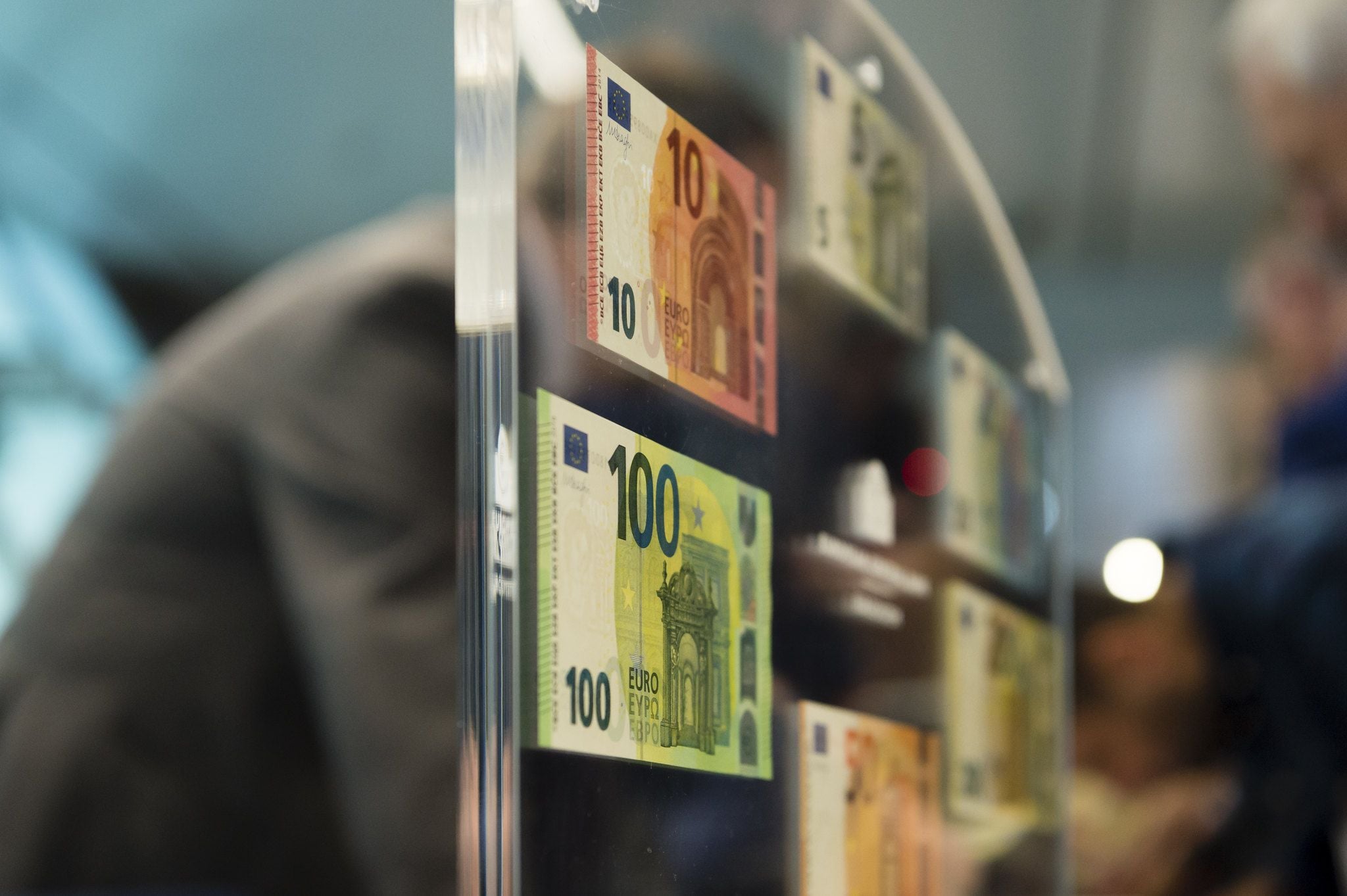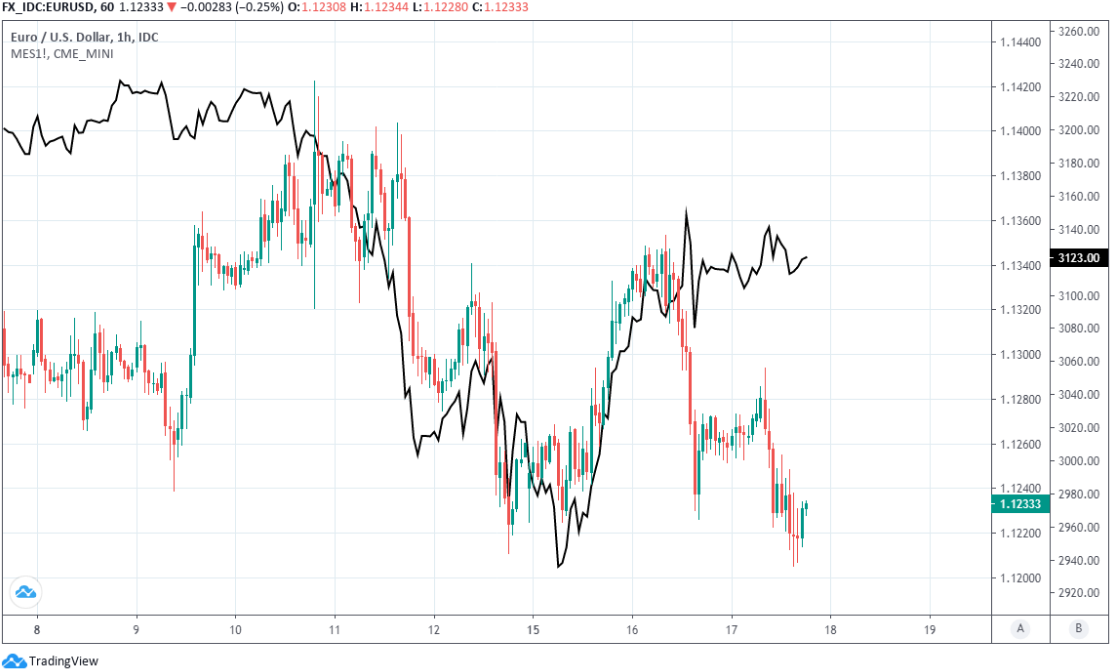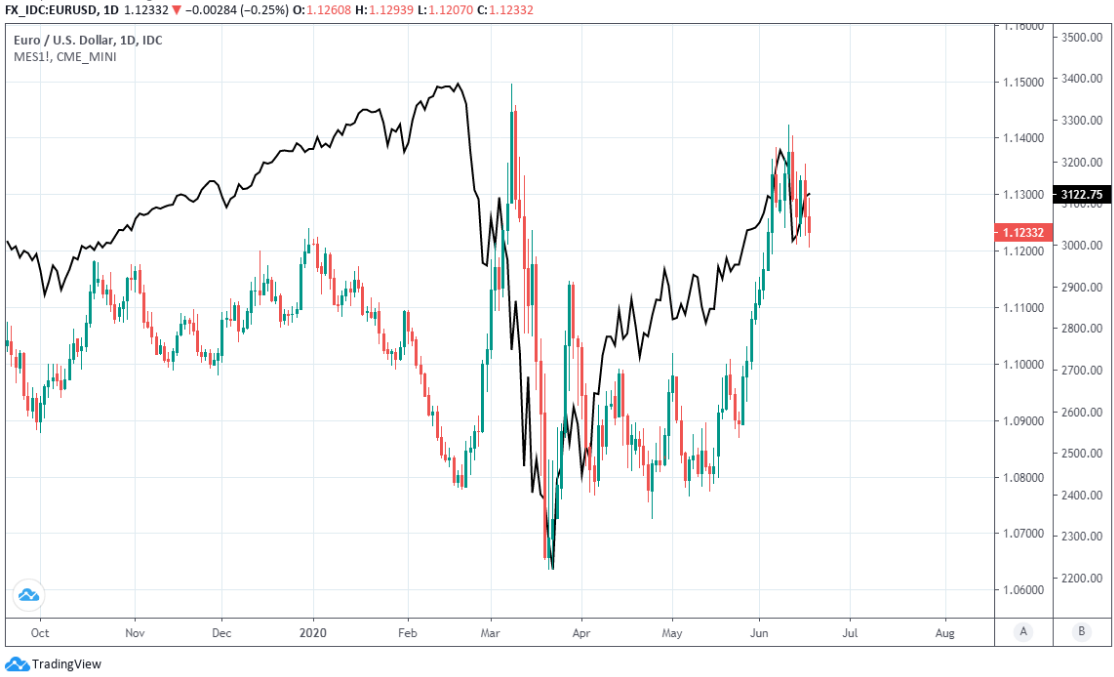Euro-to-Dollar Rate Crumbles as EU Meeting Looms and Rally Seen Placed On Pause
- Written by: James Skinner
- EUR/USD crumbles in risk happy market as investors pause rally.
- ABN Amro and HSBC say rally overdone, tip EUR/USD correction.
- EUR undeperforms as recovery fund talks loom and USD steadies.
- USD in tentative stabilisation after retail sales surge back in May.

Image © European Central Bank
Achieve up to 3-5% more currency for your money transfers. Beat your bank's rate by using a specialist FX provider: find out how.
The Euro crumbled in a risk hungry market Wednesday ahead of an important meeting of European Union leaders and as the Dollar showed signs of stabilisation, leading ABN Amro to call time on the single currency's rally.
Europe's single currency was underperforming having ceded ground to all majors except a poorly Pound, with losses sustained even as stock markets spoke of a recovery in risk appetite.
The Euro edged lower throughout the Wednesday session, diverging from stock markets that had recovered earlier virus-related losses while taking it further below the 1.13 handle given up back on Tuesday.
The Euro has lagged risk assets generally since U.S. retail sales surprised sharply on the upside for May, when a double-digit gain almost fully reversed the fall in consumption seen back in April.
Tuesday's data is further evidence that a U.S. recovery is underway, an idea that was first given credence by a May payrolls report that detailed an increase of more than 2 million new or recovered jobs, against an expectation for a loss of more than 7 million. ABN Amro says this could be significant for the outlook.
"There are several reasons why the rally in EUR/USD has come to an end for now. First, US economic data have surprised on the upside and investors have started to notice," says Georgette Boele, a senior FX strategist at ABN Amro. 
Above: Euro-to-Dollar rate shown at hourly intervals alongside S&P 500 index futures (black line).
"Investors are re-evaluating the US dollar; not as a safe haven but as a cyclical currency," Boele writes in a Wednesday research note. "It is a safe haven, but it is also a cyclical currency. Investors may start to think that the outlook for the US economy is improving more than that for the eurozone."
ABN Amro says recent U.S. data creates scope for economic outperformance of the Eurozone and for the greenback to regain some of its earlier cyclical qualities which could ultimately see the Euro-to-Dollar rate trading on the back foot even on the market's good days.
The bank tips the Euro-to-Dollar rate for a fall to 1.05 over the summer before a slow climb back to 1.12 in time for year-end. It also cites the fresh outbreak of coronavirus in Beijing and parts of the U.S., flagging that it could encourage renewed demand for safe-havens that would favour the Dollar.
Meanwhile, the Euro is seen at risk of disappointment over the coronavirus recovery fund that EU leaders will discuss on Friday.
ABN says the fund will have to be watered down substantially in order to secure the endorsement of all EU members, which could lift bond yields on the 'periphery' of Europe and weigh on the single currency.
Above: Euro-to-Dollar rate shown at daily intervals alongside S&P 500 index futures (black line).
"Two drivers are starting to have a direct impact on currency markets: debt dynamics and balance sheet expansion. Fiscal room, debt dynamics and balance sheet expansion are all intertwined. Those with more fiscal room may see their economies recover faster than those with larger debt overhangs, without resorting to even larger balance sheets, thus allowing their currencies to outperform," says David Bloom, head of FX research at HSBC, who forecasts the Euro will fall to 1.09 in September before recovering to 1.12 by year-end.
Investors' appetite for Euros has improved markedly since May 18 when France and Germany suprised the market with a proposal to share up to €500 billion of grants among member states who're struggling with the cost of the coronavirus, which prompted a rally that lifted the Euro-to-Dollar rate from 1.08 and put it on course for last week's high of 1.1433.
It's an even larger €750bn European Commission counter-proposal that EU leaders will debate on Friday but the Euro has squeezed all the juice from this particular fruit, while attention among investors and analysts is reverting back to the relative strength of economic fundamentals, and risks to the recovery.
For the time being that recovery favours a Dollar that has been sold heavily in recent weeks, and leans against a Euro that's still burdened by debt problems which limit policy responses on the 'periphery'.
"The best performing currencies should be those with low government debt-to-GDP ratios, where loose fiscal policy can help promote a faster economic recovery. Due to the lower levels of debt in these economies, there should be less onus on central banks to buy government bonds or other assets to keep rates low, which would also be currency supportive. Therefore our top four picks in the medium term are the AUD, NZD, NOK and SEK. At the other end of the spectrum, we are more concerned about the EUR, GBP and CAD," Bloom says, citing a list of currencies that all rose against the Dollar and Euro on Wednesday. "Within this framework, the EUR’s recent rally looks overdone."





